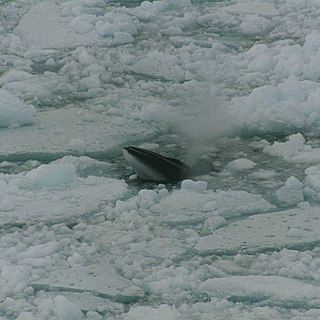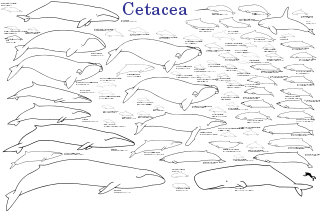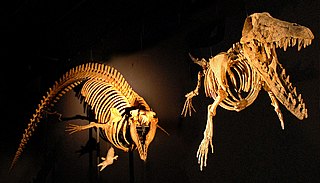
The blue whale is a marine mammal belonging to the baleen whale suborder Mysticeti. Reaching a maximum confirmed length of 29.9 meters and weight of 173 tonnes, it is the largest animal known to have ever existed. The blue whale’s long and slender body can be various shades of grayish-blue dorsally and somewhat lighter underneath.

Rorquals (Balaenopteridae) are the largest group of baleen whales, a family with ten extant species in two genera. They include what is believed to be the largest animal that has ever lived, the blue whale, which can reach 180 tonnes, and the fin whale, which reaches 120 tonnes ; even the smallest of the group, the northern minke whale, reaches 9 tonnes.

Baleen whales, also known as whalebone whales, form a parvorder of the infraorder Cetacea. They are a widely distributed and diverse parvorder of carnivorous marine mammals. Mysticeti comprise the families Balaenidae, Balaenopteridae (rorquals), Cetotheriidae, and Eschrichtiidae. There are currently 15 species of baleen whales. While cetaceans were historically thought to have descended from mesonychids,, molecular evidence supports them as a clade of even-toed ungulates (Artiodactyla). Baleen whales split from toothed whales (Odontoceti) around 34 million years ago.

The Antarctic minke whale or southern minke whale is a species of minke whale within the suborder of baleen whales. It is the second smallest rorqual after the common minke whale and the third smallest baleen whale. Although first scientifically described in the mid-19th century, it was not recognized as a distinct species until the 1990s. Once ignored by the whaling industry due to its small size and low oil yield, the Antarctic minke was able to avoid the fate of other baleen whales and maintained a large population into the 21st century, numbering in the hundreds of thousands. Surviving to become the most abundant baleen whale in the world, it is now one of the mainstays of the industry alongside its cosmopolitan counterpart the common minke. It is primarily restricted to the Southern Hemisphere and feeds mainly on euphausiids.

Neobalaenidae is a family of baleen whales including the extant pygmy right whale. Although traditionally considered related to balaenids, a recent phylogenetic study by Fordyce and Marx (2013) recovered the living pygmy right whale as a member of Cetotheriidae, making it the only extant cetotheriid, but not all authors agree with this argument.

The pygmy right whale is a member of the cetotheres, a family of baleen whales, which until 2012 were thought to be extinct; previously C. marginata was considered the sole member of the family Neobalaenidae. First described by John Edward Gray in 1846, it is the smallest of the baleen whales, ranging between 6 and 6.5 metres in length and 3,000 and 3,500 kilograms in mass. Despite its name, the pygmy right whale may have more in common with the gray whale and rorquals than the bowhead and right whales.

The evolution of cetaceans is thought to have begun in the Indian subcontinent, from even-toed ungulates 50 million years ago, over a period of at least 15 million years. Cetaceans are fully aquatic marine mammals belonging to the order Artiodactyla, and branched off from other artiodactyls around 50 mya. Cetaceans are thought to have evolved during the Eocene or earlier, sharing a closest common ancestor with hippopotamuses. Being mammals, they surface to breathe air; they have 5 finger bones (even-toed) in their fins; they nurse their young; and, despite their fully aquatic life style, they retain many skeletal features from their terrestrial ancestors. Research conducted in the late 1970s in Pakistan revealed several stages in the transition of cetaceans from land to sea.

Archaeoceti, or Zeuglodontes in older literature, is a paraphyletic group of primitive cetaceans that lived from the Early Eocene to the late Oligocene. Representing the earliest cetacean radiation, they include the initial amphibious stages in cetacean evolution, thus are the ancestors of both modern cetacean suborders, Mysticeti and Odontoceti. This initial diversification occurred in the shallow waters that separated India and Asia 53 to 45 mya, resulting in some 30 species adapted to a fully oceanic life; though both echolocation and filter-feeding evolved during a second radiation 36 to 35 mya.

Cetotherium is an extinct genus of baleen whales from the family Cetotheriidae.

Mammalodon is an extinct genus of archaic baleen whale belonging to the family Mammalodontidae.

Remingtonocetidae is a diverse family of early aquatic mammals of the order Cetacea. The family is named after paleocetologist Remington Kellogg.

Cetotheriidae is a family of baleen whales. The family is known to have existed from the Late Oligocene to the Early Pleistocene before going extinct. Although some phylogenetic studies conducted by Fordyce & Marx 2013 recovered the living pygmy right whale as a member of Cetotheriidae, making the pygmy right whale the only living cetotheriid, other authors either dispute this placement or recover Neobalaenidae as a sister group to Cetotheriidae.
Eomysticetus is an extinct genus of baleen whale from the late Oligocene (Chattian) Chandler Bridge Formation of South Carolina.

Llanocetus is a genus of extinct toothed baleen whales from the Late Eocene of Antarctica. The type species, Llanocetus denticrinatus, reached gigantic proportions, with the juvenile specimen reaching an estimated 8 m (26 ft) in length; a second, unnamed species, known only from three isolated premolar teeth, reached an estimated total body length of up to 12 m (39 ft). Like contemporary baleen whales, Llanocetus completely lacked baleen in its jaws. It was probably a suction feeder like the modern beaked and pygmy right whales.
Eomysticetidae is a family of extinct mysticetes belonging to Chaeomysticeti. It is one of two families in the basal chaeomysticete clade Eomysticetoidea.

Aetiocetidae is an extinct family of toothed baleen whales known from the Oligocene. The whales are from the North Pacific Ocean and ranged in size from 3 to 8 metres long. Many of the described specimens were discovered from the Upper Oligocene of the Japanese Morawan Formation, the largest known one from the Morawan's Upper tuffaceous siltstone. Other formally described extinct toothed mysticetis from this time are smaller, from 3 to 4 metres in length. Mysticeti with true baleen are seen in fossils from the Upper Oligocene. The monophyly of the family is still uncertain, as are the evolutionary relationship between the early toothed baleen whales and the early and extant edentulous baleen whales. However, the cladistic analyses of Coronodon and Mystacodon seem to indicate that Aetiocetidae and Llanocetidae are more closely related to crown Mysticeti than to Mammalodontidae, Coronodon, and Mystacodon.
Mystacodon is a genus of toothed baleen whale from the Late Eocene Yumaque Formation of the Pisco Basin in southwestern Peru. It is the oldest known baleen whale, and was probably a suction feeder of small prey on the seafloor.
Fucaia is an extinct genus of primitive baleen whale belonging to the family Aetiocetidae that is known from Oligocene marine deposits found in Vancouver Island, Canada and Olympic Island, Washington State.

Hans Thewissen is a Dutch-American paleontologist.












